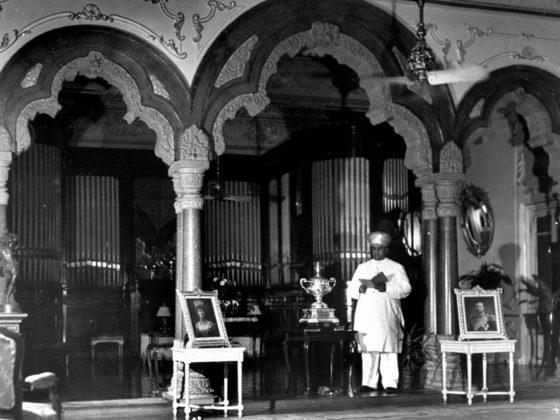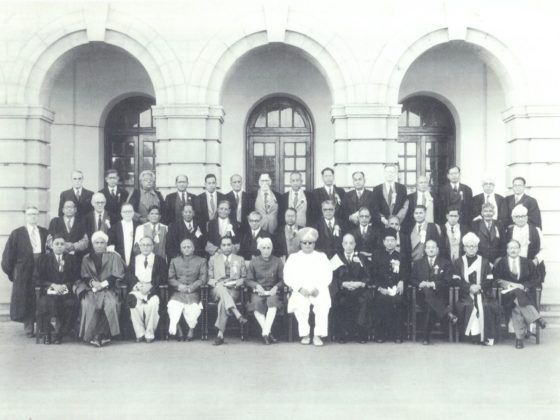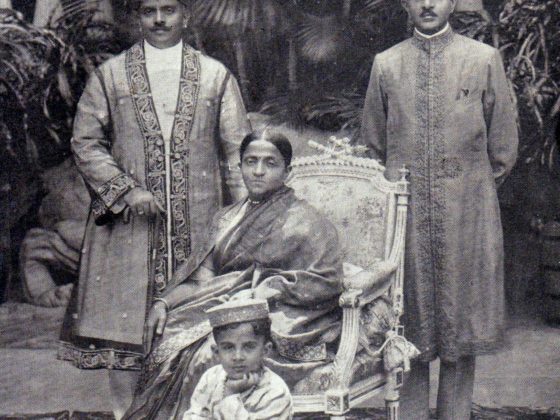Maharaja of Mysore
H.H Sri JCR Wadiyar
25th Erstwhile of Mysore Kingdom
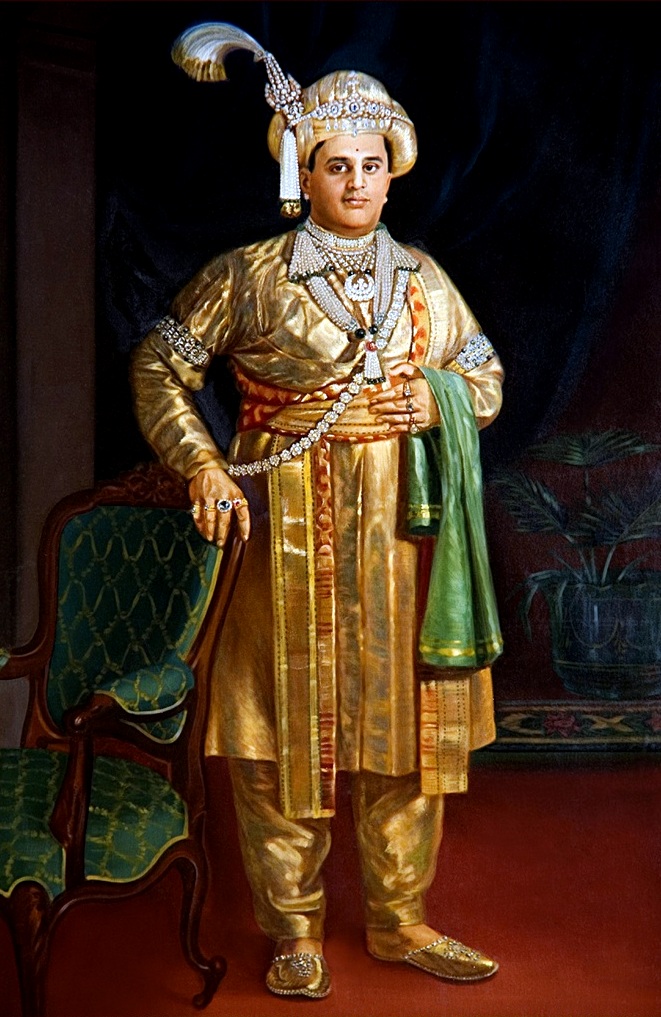
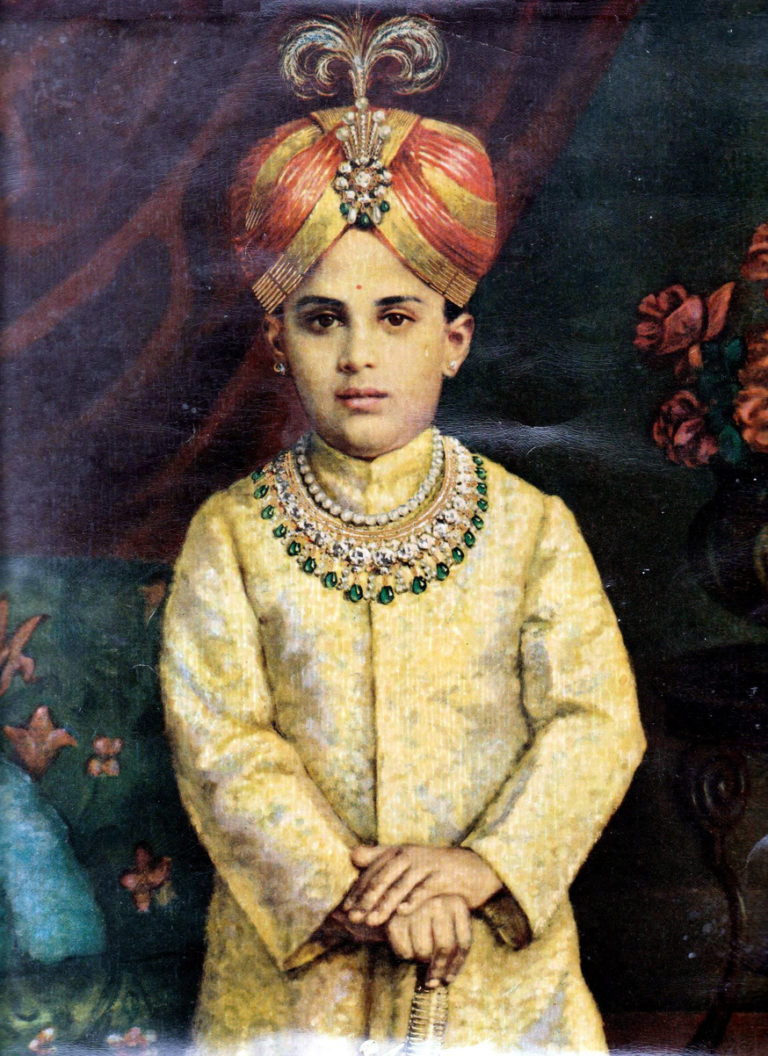
Early Life
It was on July 18, 1919, the Mysore Palace witnessed the birth of a prince. The baby boy was born to Yuvaraja Kantirava Narasimharaja Wadiyar. The birth of a male child in the royal family was significant and most joyous because the reigning King, Krishnaraja Wadiyar IV, was without an heir to the throne, like his predecessor Maharaja Krishnaraja Wadiyar III. The prince was named Jaya Chamaraja Wadiyar.
The only son of Kantirava Narasimharaja Wadiyar, Jaya Chamaraja Wadiyar succeeded to the throne as the adopted son of his uncle, Krishnaraja Wadiyar IV. The installation took place on September 8, 1940. Besides becoming a popular ruler, Jaya Chamaraja Wadiyar earned fame as a scholar among the princes.
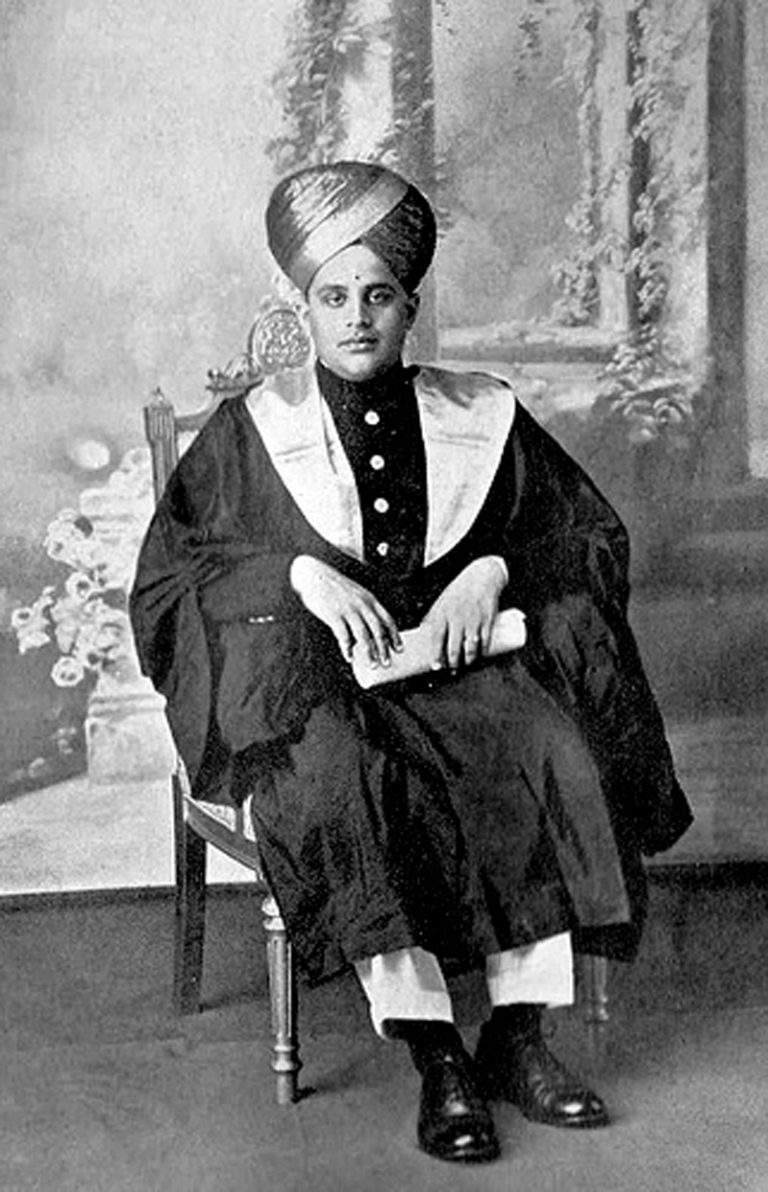
Education
Arrangements were made in 1925 to give instruction to Prince Jayachamaraja Wadiyar in Kindergarten, music and other subjects. During the year 1927-28, a regular school was formed with a Superintendent. In 1930 a Tutor was appointed to the Prince who was given the entire charge of the school. The school became a residential institution and was transferred to Lokaranjan Mahal.
After early education at the Royal School in Mysore, Jaya Chamaraja Wadiyar joined the Intermediate College, later named as Yuvaraja’s College, to study along with his own future subjects. His subjects of study were history, politics and economics. During 1933-34, the Prince passed the S.S.L.C. Examination. After this the school staff was disbanded. During 1935-36 the Prince underwent a course in Shooting, Infantry Drill and Physical Training. The prince also made excursions in Bombay, Udakamandala, and other places. He later graduated from the Maharaja’s College earning five awards and gold medals. However, he took keen interest in music, art, religious exercise and sports.
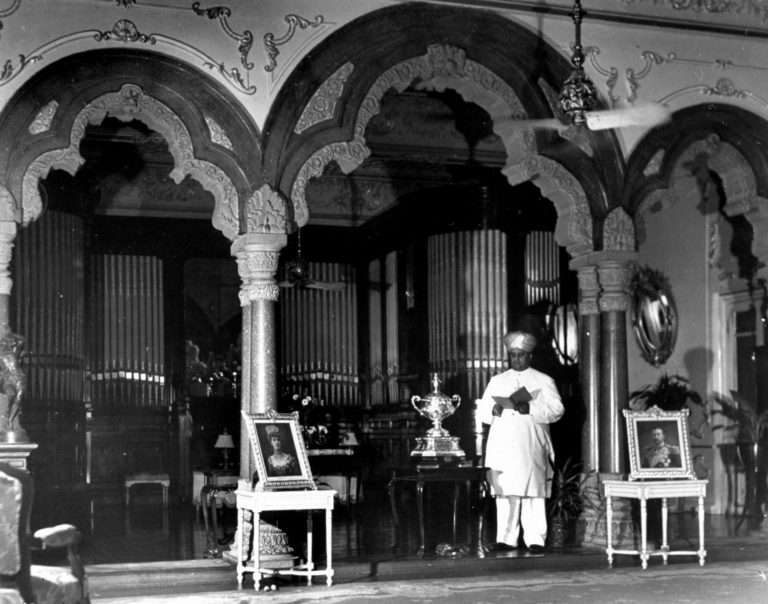
Music and Philosophy
Sri. Jayachamaraja Wadiyar graduated from the Maharaja’s College, Mysore, with History, Economics , Politics as his subjects in 1938. He later studied Vedanta under two eminent scholars of the day , Sri. Navinam Venkatesa Sastry and Sri Chandrasekhara Bhattaru and also acquired good knowledge of Sanskrit. He used to meet frequently Samskrita bhashabhushana Prof. S. Ramachandra Rao for discussion and clarification of doubts. The scholarship that he acquired by long study was recognized by the award of two doctorates — LLD, of the Banaras Hindu University and D. Litt. Of the Annamalai University.
Read MoreHe ascended the Mysore throne when he was 23 and ruled the state well. He was one of the first rulers to join the Indian Union after independence and was Rajapramukh of Mysore first and then Governor of Mysore and later Governor of Madras, after which position, he retired from administrative responsibilities. He earned the regard and affection of the people in these positions. He then accepted lecturing engagements at the invitation of public bodies in North and South America, Ghana, Switzerland, Russia and Australia.
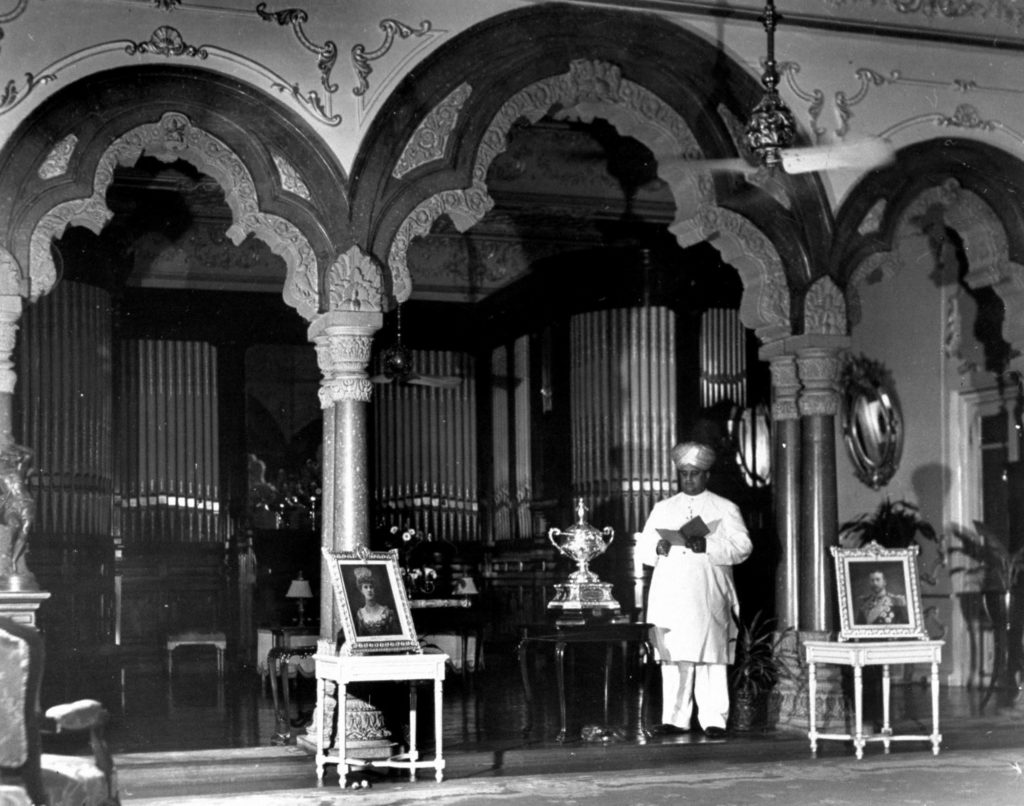 His interest in music was abiding and wide. Early in life, he obtained a diploma from Guild Hall of Music, London and later became an Honorary member of the Trinity College of Music London He was proficient in the playing of two instruments, the Piano and the Organ. His library of gramophone records of western music, built up over long years, is one of the largest. He developed a keen interest in Carnatic Music and acquired proficiency scholars like late Sangitakalanidhi Sri. Vasudevacharya.
His interest in music was abiding and wide. Early in life, he obtained a diploma from Guild Hall of Music, London and later became an Honorary member of the Trinity College of Music London He was proficient in the playing of two instruments, the Piano and the Organ. His library of gramophone records of western music, built up over long years, is one of the largest. He developed a keen interest in Carnatic Music and acquired proficiency scholars like late Sangitakalanidhi Sri. Vasudevacharya.
His devotion to God and Guru was phenomenal and he gave liberally to all causes and was called “Pratyaksha Bhoja”. Though a ruler, it may be said he was a “yogi”. He was a Sri vidyaopasaka.
Sri Jayachamaraja Wadiyar composed 94 Kritis. The language of the Kritis is Sanskrit and the subject matter is devotion, praise of the glory of the Lord and seeking his succor. 61 are in praise of Ambika, 15 in praise of Siva and 1 1, 4, 2 & 1 in praise of Ganapathi, Vishnu, Sarasvati and Lakshmi respectively.
The Ankita is mainly in the name of his favourite deity Sri. Vidya. She is referred to as Sri Vidyamodini, Sri Vidyaviharini, Sri Vidyaparadevata, Sri Vidyanilaya, Dharaniparchita, Sri Guruchitprabhananda, Rajayogindravandita etc. There are also some references, such as Nagalingavaraputram, Nagalingavarasutam, but they are not ankitas. The language is tough in several places and the Kritis will be difficult to handle for those without some knowledge of Sanskrit. Some vidwans say, they are like the Kritis of Sri. Muthuswamy Dikshitar. There is one Kriti in a new raga, Jayasmvardhini, under the 7Th mela Suryakanta, and is set to Khanda Triputa tala (“Pahl mam Sri Rajarajesvari” — Aroha SGMPDNS-Avarohana SNDPMGRS).
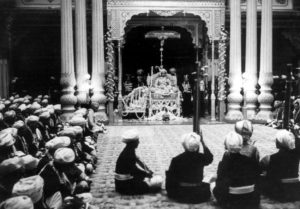 The Cultural Atmosphere of The Mysore Palace – Rani Vijaya Devi I have often been asked about my family’s, in particular my brother H.H.Jaya Chamaraiendra Wadiyar’s great interest in music and art of both India and the West. While it may be true that one has some inborn gift to be proficient in any of the arts, I think the cultural atmosphere prevailing in the Mysore Palace at the time of our childhood (between 1920-1940) did undoubtedly have a profound influence on us. Some of my earliest recollections of life in the Palace in the Mysore are those of family gatherings, religious poojas, celebrations of traditional Hindu festivals and other cultural activities. I do not remember any function, however formal or informal, of which music did not form an integral part. The nagaswaram, considered very auspicious, heralded every ceremony, festival and private pooja.
The Cultural Atmosphere of The Mysore Palace – Rani Vijaya Devi I have often been asked about my family’s, in particular my brother H.H.Jaya Chamaraiendra Wadiyar’s great interest in music and art of both India and the West. While it may be true that one has some inborn gift to be proficient in any of the arts, I think the cultural atmosphere prevailing in the Mysore Palace at the time of our childhood (between 1920-1940) did undoubtedly have a profound influence on us. Some of my earliest recollections of life in the Palace in the Mysore are those of family gatherings, religious poojas, celebrations of traditional Hindu festivals and other cultural activities. I do not remember any function, however formal or informal, of which music did not form an integral part. The nagaswaram, considered very auspicious, heralded every ceremony, festival and private pooja.
During the grander festivals like the Dasara, Deepavali and Ganesh Chathurthi, there were Bharatanatyam performances by noted artistes like Vidushi Venkatlakshmamma, Sundaramma and others, followed by concerts by Asthana Vidwans. My brother, even when young, had to play an important role along with my uncle and father at these festivals. Thanks to these traditions, we were constantly exposed to a cultural feast and were fortunate enough to hear musicians like. Sri Muthia Bhagavatar, Sri Vasudevacharya, Vainika Venkaragiliyappa, Devep.drappa, Krishna lyengar and many others. The late Dr. V. Doreswamy lyengar, one of India’s leading Vainikas, was then a young and upcoming virtuoso. As is well known, Vidwan Vasudevacharya would later become my brother’s teacher.
Apart from the festivals themselves, something or the other was always going on throughout the year. The artistes taking part were not just from Mysore State. Ustad Faiyaz Khan and shehnai players from Baroda, to mention only a few, were some of our regular visitors. The venue for these concerts was the Kalyan Mantap or the Darbar Hall of the palace, which provided a beautiful setting, full of atmosphere and dignity. These activities were not confined to formal occasions only. Often at a private gathering, whether in the palace or in the houses of other members of the family, there used to be dance or music or Harikatha performances. During the daily religious pooja of my uncle, H.H. Sri Krishnarajendra Wadiyar, it was customary for one of the palaces vidwans to perform. This tradition was continued by my brother. I recall many a time when the family used to sit upstairs and listen to the beautiful music wafting through the windows.
The palace, with its formal rooms, paintings, wood carvings and art treasures was always a fascinating place for us children to explore, and this is what we did on a Sunday afternoon or on holidays. My brother, being the eldest of the younger group which included my two sisters, myself, and our three cousins, always led such ‘expeditions’. We were fortunate to see the Dasara procession being painted by Sri. Y. Nagar* on the Kalyan Mantap walls quite an ambitious undertaking when one realizes that most of the people in that vast canvas came for actual sittings. Perhaps this is the only complete and authentic record left of Mysore’s now historic and famous Dasara procession. Though we grew up with Carnatic music and dance, we were, strangely enough, not taught Carnatic music until a later age. Therefore our earliest musical studies commenced with piano lessons for my brother and myself, and violin lessons for my sister. Our teacher Sister Ignatius was from the Good Shephered Convent Mysore. She was a good teacher but an extremely strict one believing in a rap on the knuckles for the smallest mistake.
I may mention an incident at one such examination when my brother was very young. The examiner that year was Dr. Adolph Mann. After the examination was over and my brother went to receive his card, Dr. Mann, who was seated at the desk, got up, went to the piano and played “Here comes the Conquering Hero”. Those of us who were waiting outside were very puzzled as to what was going on. It later transpired that that particular piece was played to congratulate my brother on his receiving a high Honors at the examination. Needless to say, we were most amused and delighted. As for my brother, he was thrilled to bits and rather enjoyed showing off to all of us.
My brother was always a good student and remained deeply involved in whatever he took up. Western classical music became a passion with him. He devoted whatever little time he could get to its study. He played and sight-read extensively, thereby enlarging his repertoire of piano music. He also bought records and spent hours listening to them. This way, no doubt, he was able to hear some of the finest artistes, for there were hardly any live western music concerts of the great European masters to be heard in India at that time. It was because of him that the rest of us had the opportunity to listen to a good deal of music, and in my own case, I can definitely say that this was how my interest in classical Western music was aroused.
I remember quite vividly the time when my grandmother used to take the whole family on vacation to Ooty, Bombay or Madras. The first thing my brother always did was to make a beeline for the record and book shops. Sometimes, he would spend an entire morning browsing through books or listening to records. This interest continued right to the end of his life.
I have always felt that an appreciation of the arts should begin at an early age and at home. In this respect we were fortunate that my family, on the whole, were very musical and encouraged learning and the arts. My uncle, H.H.Sri Krishnaraja Wadiyar, was himself a competent musician playing Carnatic music on the flute and light Western classical music on the violin. My father played the harmonium, having had some lessons from Professor Tempe, his good friend and teacher.
The other members all played either an Indian instrument or the piano but were not of professional standard. Though they all liked Carnatic classical music, their preference as far as Western music went was for the lighter classics and jazz. My sister Sujaya Devi played the violin. My father, who liked jazz and took a keen interest in the jazz band which was a part of the orchestra, was well aware of our inclinations, and often introduced my brother and myself to his friends as “My two highbrow children”. All the same, he was concerned about our progress and many a time called us in to play for his guests.
Had my brother not been the heir apparent, I expect he would have gone seriously into studying the piano. He stopped after he had completed his Diploma examinations because of his other studies and official commitments.
Most people know of his interest in Western music, his fabulous record collection and his knowledge of Sanskrit and philosophy. Few know about his love of Carnatic music. It was not until a later period in his life, when he became the Maharaja that he took up Carnatic music under the guidance and tutelage of Vidwan Vasudevacharya.
His inborn talent, which was lying latent, as it were, suddenly blossomed and the result, after some years of study, was the composition of 94 Kritis, which he dedicated to the Goddess Chamundeshwari, the deity of our family. He was modest about his achievement and very rarely spoke about it. I remember once asking him about the Kritis and all he said was: “It is my humble offering to the Devi”.
Maharaja and Western Music
Maharaja of Mysore, Sri. H.H. Jaya Chamaraja Wadiyar was a great connoisseur and Patron of Western Music. He became a Licentiate of the Guildhall School of Music, London and honorary Fellow of Trinity College of Music, London, in 1945.
Aspirations to become a concert pianist were cut short by the untimely death of both his father the Yuvaraja Kanteerava Narasimharaja Wadiyar in 1939 and his uncle the Maharaja Krishnaraja Wadiyar IV in 1940, when he succeeded the throne of Mysore.
He helped the Western world discover the music of a little-known Russian composer Nikolai Medtner (1880-1951), financing the recording of a large number of his compositions and founding the Medtner Society in 1949. Medtner’s Third Piano Concerto is dedicated to the Maharaja of Mysore.
The Maharaja also enabled Richard Strauss’s last wish to be fulfilled by sponsoring an evening at the Royal Albert Hall by London’s Philharmonia Orchestra with German conductor Wilhelm Furtwangler in the lead and soprano Kirsten Flagstad singing his Four Last Songs in 1950.
He was the first president of the Philharmonia Concert Society, London in 1948.
The following extract from a Book on Sir Walter Legge throws much light on what transpired in the period 1948-1952 and how Maharaja’s patronage in the western world of Music came to an end post Republic:
Back in London, the future of Walter Legge’s Philharmonia Orchestra was looking rosier thanks to the intervention of a wealthy young Indian. The Maharaja of Mysore had first become involved with Legge and EMI through his enthusiasm for the music of the emigre Russian composer Nikolay Medtner, recordings of which he wished to sponsor. The ‘Medtner Society Edition’ had begun in a modest way. Now Legge had been invited to India to discuss far more ambitious plans:
The visit to Mysore was a fantastic experience. The Maharajah was a young man, not yet thirty. In one of his palaces he had a record library containing every imaginable recording of serious music, a large range of loudspeakers, and several concert grand pianos. He had intended to be a concert pianist and had been accepted by Rachmaninoff as a pupil when both his father and his uncle died and he succeeded to the throne – which meant giving up all ideas of a musical career and returning home at once. In the weeks I stayed there, the Maharaja immediately agreed to paying for the recordings of the Medtner piano concertos, an album of his songs, and some of his chamber music; he also agreed to give me a subvention of £1 0,000 a year for three years to enable me to put both the Philharmonia Orchestra and the Philharmonia Concert Society on a firm basis.
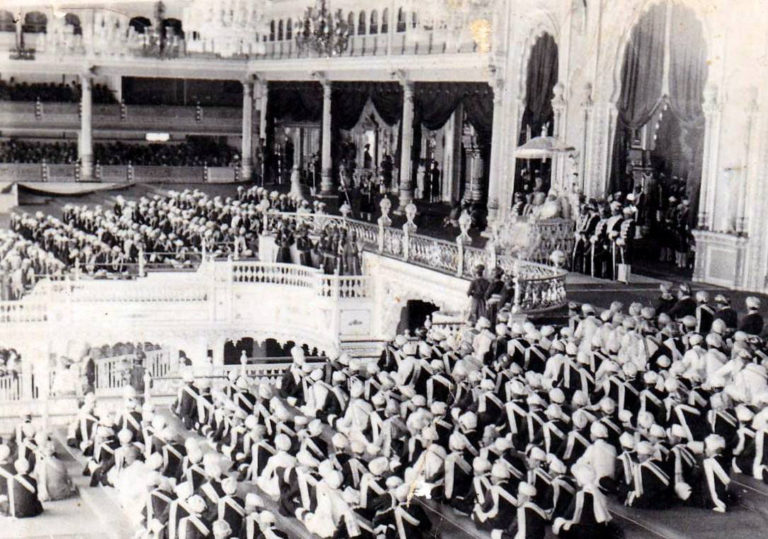
Administration
It was an honour that came with unexpected suddenness, but by training and temperament he had been fitted to bear its responsibilities. In the proclamation issued to the people on the occasion of his Coronation the young Maharaja said,
” My beloved people, In succeeding to the throne of Mysore I follow a great Ruler who loved you all, and who won your love by his love of God, by his wisdom, his graciousness, his humility, his faithfulness to duty and his Kingly greatness. It is now for us to dedicate ourselves to the fulfilment of his great task. And we shall succeed in fulfilling it if we so consecrate ourselves in the spirit of unity and self-sacrifice that we can win through.
Read More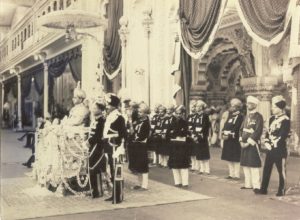 In this spirit I look upon this ceremony of ascending the throne of my ancestors as a dedication of myself, my life and all I have to the service of the people of Mysore.
In this spirit I look upon this ceremony of ascending the throne of my ancestors as a dedication of myself, my life and all I have to the service of the people of Mysore.
But I am fully conscious that no effort of mine can succeed alone. I need your help and your co-operation, your confidence and your love. May God grant me light and strength in the discharge of the sacred duty entrusted to me, and His blessings in abundance rest on every hearth and brighten every home in Mysore ! ” Since then many a popular leader has taken over the reins of administration in many places, but we know none who has made more graceful or as grateful acknowledgments and appeals.
At the time of Sri Krishnaraja Wadiyar’s death, Sir Mirza Ismail was Dewan, and had held that office from 1926. Under the changed conditions, his continuance was not happy, and he retired in a few months. N. Madhava Rao, the Senior Councilor, was appointed Dewan. Near his person the young Maharaja had Sir T. Thumboo Chetty, son of the Rajadharrnapravina T. R. A. Thumboo Chetty who had been Senior Councilor from 1881 to 1901, as Private Secretary, whose good knowledge of State affairs and sober counsels were of value.
One of the first acts of the Maharaja was to implement the Reforms sanctioned by his predecessors just before his demise. New elections were held, and in June 1941 His Highness inaugurated the new Legislative Council and Representative Assembly.
Addressing a Joint Session of the two Houses His Highness observed, ” The reforms that are now to come into operation are thus a natural corollary to the honorable record established by these bodies, and a recognition of the experience they have gained in Parliamentary methods of business. At the same time, I am sure that these reforms will be recognized as a generous response to the desire of important sections of the people for increased participation in the administration of the State.
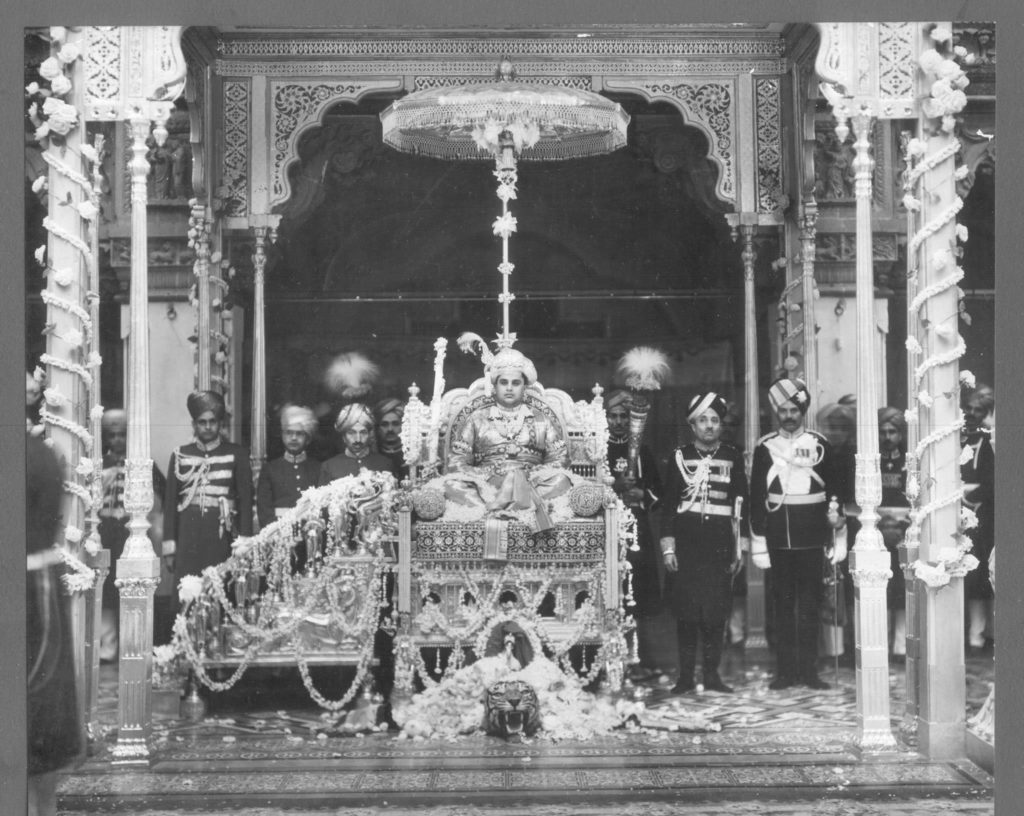 It will be useful to recount a few of the special features of the reforms which are being inaugurated today : wider franchise in the case of both Houses; substantial increase in their strength ; larger representation for special interests and minorities and for women representation of minority communities by direct election; extension of the life of each House from three to four years; provision of a statutory elected majority of nearly two-thirds.
It will be useful to recount a few of the special features of the reforms which are being inaugurated today : wider franchise in the case of both Houses; substantial increase in their strength ; larger representation for special interests and minorities and for women representation of minority communities by direct election; extension of the life of each House from three to four years; provision of a statutory elected majority of nearly two-thirds.
In the Legislative Council power to elect a non-official President and Deputy President for the body ; increased power for the Representative Assembly in the matter of legislation and control of State expenditure ; and freedom of speech and immu-nity from arrest, under certain conditions, for members of both Houses.
Above all I am sure you will appreciate the decision to give a place to the elected representatives of the people in my Executive Council with regular port-folios of administration. For my part I am convinced that a variety of experience on the part of my Ministers can only add to the weight and value of the advice that receive from my Council. It is now for us all, working together with the welfare of our State as our united objective, to take steps to ensure that our future is worthy of our past.”
During the first two years of his reign the Maharaja toured the Districts of the State, acquainting himself with the local wants, and trying to meet them. He announced a special grant of Rs. two lakhs for the improve tient of the malnad area, as also the construction of a new general hospital and of a regulated market at Davangere, and a water-supply scheme for Chitaldiirg.
The establishment of an Occupational Institute or Polytechnic and an Institute of Indian Medicine was taken up in Bangalore. It was not a normal time, and a considerable portion of the State’s attention and energy were commissioned by the suzerain power for material aid in the Second World War.
His Highness and the Government contributed Rs. 50 lakhs for the war, and raised Rs. 10 lakhs from the public for the War Fund. Rs. 8 crores and 50 lakhs of State Funds were invested in War Bonds. A vessel of the Royal Indian Navy, a squadron of aircraft, and a fighter-plane went as gifts from Mysore for the war.
The First Battalion of the Mysore Infantry and two more battalions were sent for overseas service with the British troops. Facilities were afforded to raise a Trans-port Company in the State.
Twenty-six industrial concerns in the State were engaged in the manufacture of war requirements. The training of 2500 war technicians was arranged. Land, buildings, and timber required from the State were placed at the disposal of the army. In 1942 the National War Front was introduced in the State to disseminate war information and maintain public morale. In June 1943 the Maharaja opened a War Services Exhibition in Bangalore which attracted 5 lakhs of visitors in eight days.
A Welfare Committee and a Welfare Club for Air Force personnel, and a Victory Hall for the use of troops, sought to manifest society’s interest in the welfare of military men. Protection to the State’s public during the war was organised by large scale air raid precaution arrangements, and by the formation of Civic Guards, and their economic interests were looked after by measures to prevent inflation, by grant of dearness allowance to official and industrial labor, and by securing food supplies to the public.
36 major irrigation works, costing Rs. 95 lakhs and bringing an additional 52000 acres under irrigation, have been sanctioned and taken up, and in order to expedite these works a separate Chief Engineer for irrigation was appointed.
We have seen that “Don’t stint on Education ” was the behest of the late Ruler to his Dewans and Directors of Public Instruction. The phenomenal growth of Education under the present Ruler’s as yet short regime may be seen by the growth of the Government’s Educational grant from Rs. 54 lakhs in 1940 to Rs. 2 crores and 75 lakhs in 1948.
The number of Primary Schools have risen from 6,400 to 9,800. The number of pupils in those schools has risen from 2 lakhs 31 thousand to 4 lakhs 80 thousand.
The number of middle schools at the close of the previous reign was 319 with 59,000 pupils. And there were 46 High Schools with 10,900 pupils. Now there are 1,175 Middle Schools with 1,23,000 pupils and 151 High Schools with 31,700 pupils. Schools have been started for imparting what is called basic education, and under a scheme of Adult education 4,500 classes are being held at a cost of Rs. 5 lakhs. The works of other departments, Medical, Health, Police, Judicial, Agricultural, Industrial and Rural welfare have continued apace.
In 1942 the Benares Hindu University conferred The Honorary Degree of Doctor of Laws on the Maharaja, who kept himself fully active, opening utility institutions, laying foundation stones of public buildings, and opening sessions of All India Conferences which met within the State, such as the All India Economic and Political Science Conference in 1940, the Indian Historical Records’ Commission and Indian Academy of Sciences in 1942, the 91st District Rotary International in 1942, the All India Olympic Games and the Indian Central Advisory Board of Education in 1946, and the All-India Educational Conference in 1948, and others since.
The title of G.C.S I. was conferred on His Highness by the British Sovereign in 1945, and in 1946 he was made G.C.B. or Grand Commander of the Order of Bath. May 1945, saw the end of the European War which bad been crushing mankind for over seven years. The world was given time to nurse its wounds and think in terms of prospective peace.
Celebrating the day of victory on 14th May 1945, His Highness in a message to the people observed, ” The collapse of Germany represents not merely the military defeat of an enemy, but the triumph of humanity over inhumanity. We know only too well what peril threatened civilization during the last six years, what misery and privation people have undergone in many countries of the world, and what sacrifices the allied nations have made to provide men and materials for bringing about the defeat of the enemy. On an occasion like this, we cannot but recall India’s proud share in the winning of victory.
But the feeling uppermost in us at the moment is not one of undue exaltation, but of thankfulness. Our first duty on this occasion is to express our thanks to the great military forces of the Allied Nations for their achievements, which are without parallel in history, and to the people of all ranks in the allied Countries for their fortitude and self-sacrifice which show heights to which righteous men and women can rise in spite of adversity.
Let us proceed in this spirit of thankfulness to celebrate the victory that has now been won, and address ourselves to the task that still lies ahead. The war against Japan remains to be concluded, and calls for an equally great effort on the part of everyone. The successes achieved in Burma and in the Pacific give us cause for hope that the day is not far off when Japan will share the fate of its erstwhile partners.
We may look forward with confidence to meeting again at no distant time to celebrate final victory and the return of peace ! ” It proved literally true. The advent of the atom bomb brought a lightning end to the war with Japan in Asiatic waters, perhaps the first great war in Asia since the times of Taimurlane and Jengiz Khan. That the State and its people had played their full part in the war effort was acknowledged by no less a person than H.R.H. the Duke of Gloucester, brother of the King Emperor in these words :
“I had heard much of Your Highness’s famous and beautiful State, with its great natural resources and its progressive spirit, particularly in education, town planning, irrigation, industrial and forest development. Now I know that Mysore’s war effort, too, is in keeping with these achievements. I have seen units of the State Cavalry and Infantry on parade. They are splendid troops worthy of their brothers who have fought so bravely overseas. The readiness with which Your Highness and the Government have offered so many of the resources and facilities of the State for India’s war potential is admirable.
Gifts of money, too, from Mysore have provided, among other important contributions, a vessel for the Royal Indian Navy and a Fighter Squadron for the Royal Air Force. That is the response to the call of emergency which one would expect from a Ruler and a State with the martial traditions of Mysore, but it is not the less deeply encouraging, and such loyal assistance from the Princes of India sets the seal of certainty upon the victory of our cause.”
One of the fields that witnessed phenomenal development during the reign of Jaya Chamaraja Wadiyar was education. Other departments like medical, health, police, judicial, agricultural, industrial and rural welfare also saw great strides under his rulership.
As months passed by, the agitation increased in virulence. In early 1947, the princely States were left with no choice but to join the Dominion at any time. Mysore became sovereign and independent for a brief period after the British withdrew.
With Independence setting in on August 15, 1947, monarchy ended in Mysore too. The Maharaja voluntarily surrendered his kingdom which became a part of the Independent India. A few days prior to the declaration of Independence, the Maharaja executed an Instrument of Accession on August 9, 1947, whereby the State acceded to the Dominion of India.
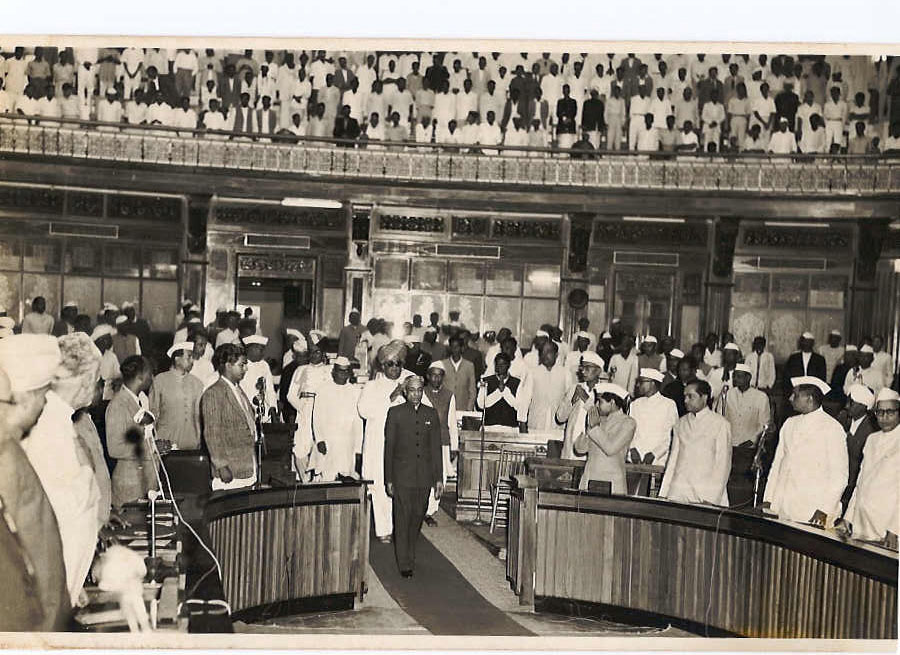 The first responsible government was set up in October in Mysore. In a proclamation on 27th October 1947, the Maharaja announced the formation of the first popular ministry in the State. This brought a virtual end to the rule by the Maharaja.
The first responsible government was set up in October in Mysore. In a proclamation on 27th October 1947, the Maharaja announced the formation of the first popular ministry in the State. This brought a virtual end to the rule by the Maharaja.
With the inauguration of the Republic of India on January 16, 1950, Jaya Chamaraja Wadiyar lost his status as ‘Maharaja’. Subsequently, the Government of India withdrew all his powers, rights and privileges, including the subsidy that was being paid to him, to make him one among the common masses. He was among the Maharajas who faced a similar fate.
Under the Republic, he was appointed the ‘Rajapramukh’ of Mysore State and subsequently the Governor of then Mysore and Madras States. The end of monarchy also brought an end to the reign of five and half centuries by the Yadava Dynasty, Jaya Chamaraja Wadiyar becoming the last and 25th ruler of that dynasty.
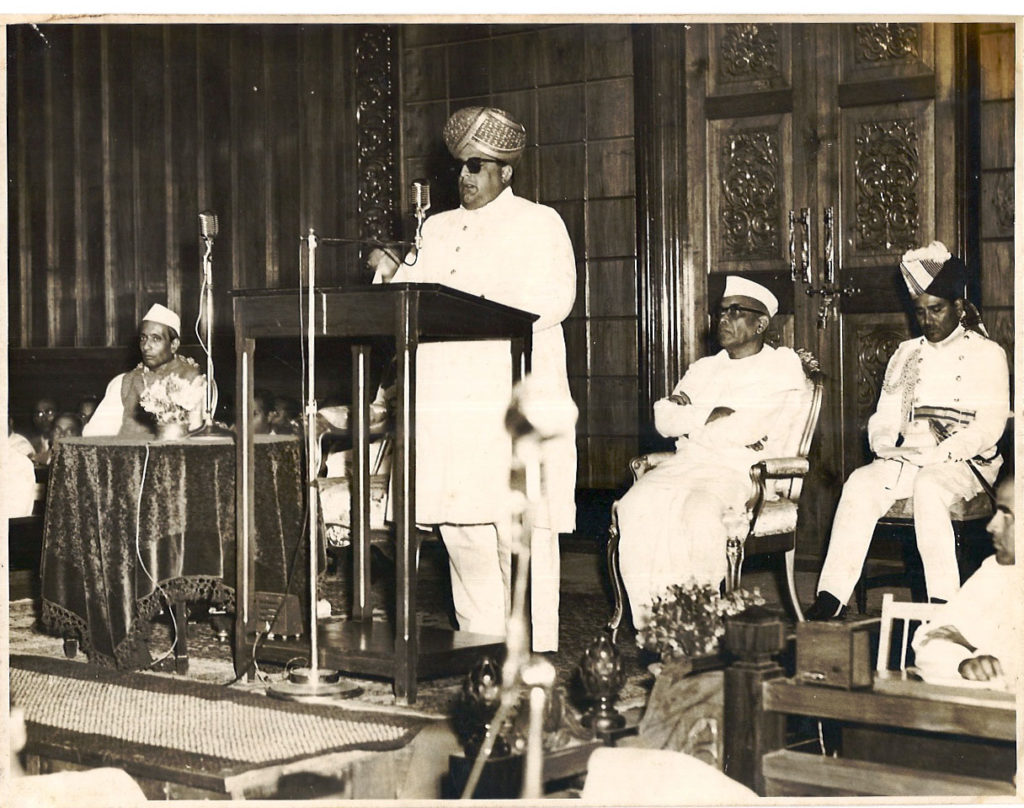 What began as a minor fiefdom under the Vijayanagar rulers, Mysore had grown into an enlarged State with an area of 29,458 square miles with a population of over 75 lakhs, seeing consolidation of power, expansion of kingdom and phenomenal progress during their reign. The five and half centuries had brought about an evolution of a major State among the princely States and later in free India, to win praise as a ‘Model State.’
What began as a minor fiefdom under the Vijayanagar rulers, Mysore had grown into an enlarged State with an area of 29,458 square miles with a population of over 75 lakhs, seeing consolidation of power, expansion of kingdom and phenomenal progress during their reign. The five and half centuries had brought about an evolution of a major State among the princely States and later in free India, to win praise as a ‘Model State.’
Mysore State could boast of the “most ancient democratic house in India”, the Mysore Representative Assembly. It was the first Indian State to establish a university and a hydro-electric generating station in the country.Its raw silk production was the highest in India. Its aircraft factory was the first of its kind. It had a broadcasting station (Akashavani) of its own. The illuminated Brindavan Garden was a “fairyland” for both the local and foreign visitors.” observed the then Governor-General of India, C. Rajagopalachari. In reply to the address presented by the Chief Minister of Mysore on behalf of the people of the State on the occasion of his 37th birthday on July 29, 1956, Jaya Chamaraja said:
“You have referred in your address to what your generosity has termed my ‘sacrifice.’ I do not look upon it as such. If destiny had decreed that over the past few centuries the progress and prosperity of the people of this beloved State should be in the hands of the Wadeyars of Mysore, then that same destiny now ordains that the time is ripe for the people, now grown to full political stature in a free democratic Republic, to rule themselves The rule of the Maharajas has indeed fulfilled its purpose, the purpose of making the people fit to rule themselves.”

